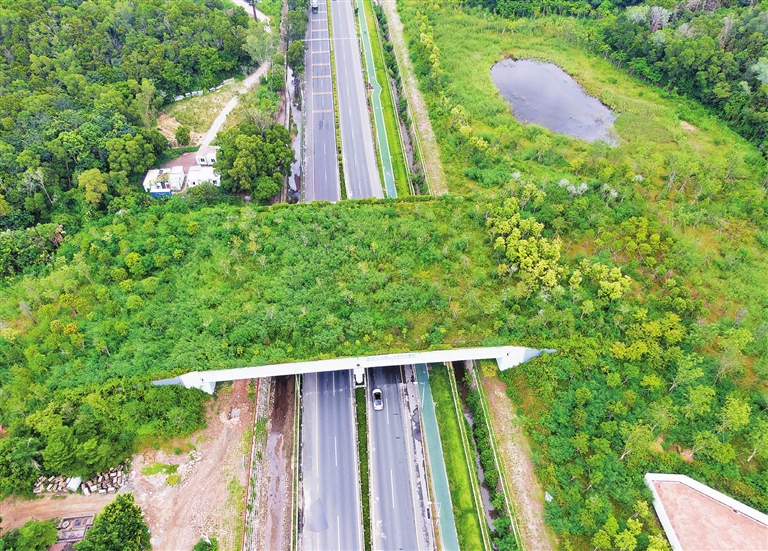

SURVEILLANCE cameras have captured leopard cats and wild boars passing a wildlife crossing that connects Qiniang and Paiya mountains in Dapeng Peninsula. The wildlife crossing over Pingxi Road, the first of its kind in Shenzhen and Guangdong Province, was built to protect wild species living in subtropical evergreen broad-leaved forests in the area, Shenzhen Evening News reported. “Shenzhen’s wildlife is commonly seen in mountains or hills with an altitude below 200 meters. Urban development and human activities have caused habitat fragmentation. For example, Pingxi Road is located between Paiya Mountain and Qiniang Mountain, splitting up two ecological conservation areas in the northern part of the city. Human interference has imposed serious negative effects upon wild animals, which also get killed by cars,” said an official with the city’s wildlife protection authority. The wildlife crossing, measuring 60 meters long and 50 meters wide, was built in April last year and an ecological surveillance project started in April this year. The project has integrated existing natural environments into the bridge’s construction to keep the whole ecological system stable. The structure has resumed species migration and increased genetic exchanges, working as a pathway for wild mammals, reptiles and amphibians to move between different species populations. Additionally, the government has set up 32 infrared cameras along pathways where leopard cats and wild boars are likely to walk in the crossing. These cameras are used to catch animals’ activities to further study the relationships between wildlife populations and their surroundings. At present, the wildlife crossing presents a rich biodiversity, with cameras recording images of leopard cats, wild boars, over 24 species of birds, such as the national second-level protected wild animal black-eared kite, three species of snakes, such as the national first-level protected wild animal pythons, five species of reptiles, and eight species of frogs and toads. The official told the reporter that animals can fully use the wildlife crossing due to their strong learning capacity and high level of adaptability. “Reptiles and amphibians can also pass the wildlife crossing.” In the future, there will be more wildlife crossings to be built according to local and geographical condition and wildlife needs. (Xia Yuanjie) | 
